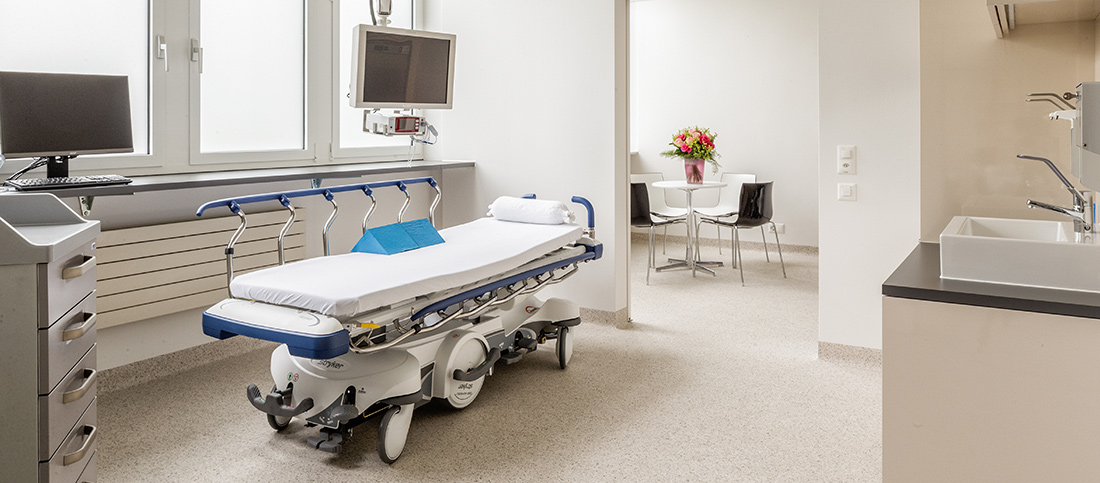Liver Biopsy (Tissue Removal from the Liver)
A liver biopsy is a procedure in which a small needle is inserted into the liver to collect a tissue sample. The tissue is examined under a microscope for pathological changes.
What Happens During a Liver Biopsy?
Do not eat or drink anything for at least 6 hours before your liver biopsy. Before the biopsy, a blood sample is taken to check your blood's ability to clot.
You will lie on your back with your right arm behind your head. An ultrasound is used to locate your liver. The physician will then clean and numb the area of your lower right chest where the biopsy will be performed. The examination can be carried out under sedation if necessary (see endoscopic procedures). Sedatives and painkillers are administered through a venous cannula in the forearm. The physician will then make a small incision and insert a biopsy needle to take a small sample of liver tissue. This takes only 2–3 seconds.
The entire procedure takes approximately 30 minutes.
After the biopsy, you have to stay in the recovery room for a few hours. During this period, your pulse and blood pressure are monitored regularly. You will most likely be able to go home afterwards. You may feel some soreness where the needle was inserted, which may also cause pain to radiate into your right shoulder. The soreness is caused by a mild irritation of the abdomen or diaphragm and can be easily alleviated with painkillers. You should also refrain from engaging in vigorous physical activity on the day of the biopsy. The entire procedure takes approximately 5 hours.
The results of the liver biopsy will be available a few days later after a pathologist has examined the tissue.

